Did you know that Greece has between 1200 and 6000 islands? Of which around 227 of these are inhabited. That is a lot of islands to see! If you think that most of the islands must be the same, or that once you’ve seen one, you’ve seen them all, you would be very wrong. Each of the Greek islands has its own charm, history and story, making exploring them all the more enticing. So, if you want to know more about the Greek islands, what sets them apart, their history, how well connected they are, and which ones are the best to visit, then read on, because our guide to the Greek islands has all this information and much more.
If you’re looking for more details on how to island-hop in Greece, including how to get between islands, the best routes and when to visit, then check out our guide to Island Hopping in Greece.
The Dodecanese Islands
Located in the south-eastern Aegean Sea, the Dodecanese islands are home to 26 inhabited islands. The 15 largest islands of the Dodecanese are Rhodes, Kos, Patmos, Agathonisi, Astypalaia, Chalki, Kalymnos, Karpathos, Kasos, Leipsoi, Leros, Nisyros, Symi, Tilos and Kastellorizo. Some of the most popular and well-known islands of these are Rhodes, the largest island in the Dodecanese, Kos, Patmos and Kalymnos. Being so well connected makes the Dodecanese islands some of the best islands to visit in Greece.

The Dodecanese islands are rich in history and ancient ruins, having been under the rule of the Romans, the Byzantines and the Ottomans in the past. Alongside the incredible castles and walled cities that are spread across the Dodecanese, there are also some of the best natural attractions across the Greek Islands, in the form of mountains, hot springs and marine life. Their proximity to Turkey also brings the influence of Turkish cuisine, so you’ll see some different dishes here from some of the other island groups.
Visiting Rhodes should be a top priority for the Dodecanese, as it has the most to offer. As the largest island in the group, it is also the best connected and most accessible. Kos is the second-best connected island in the group. Ferries from Rhodes go to and from most of the other Dodecanese islands, as well as Crete, Santorini and Athens (Piraeus port). Rhodes also has a larger airport which caters to direct international flights from European destinations in the summer months. If you’re planning to focus your Greek island hopping trip on the Dodecanese islands, we’d recommend flying into or out of Rhodes at either end to make the most of your time.
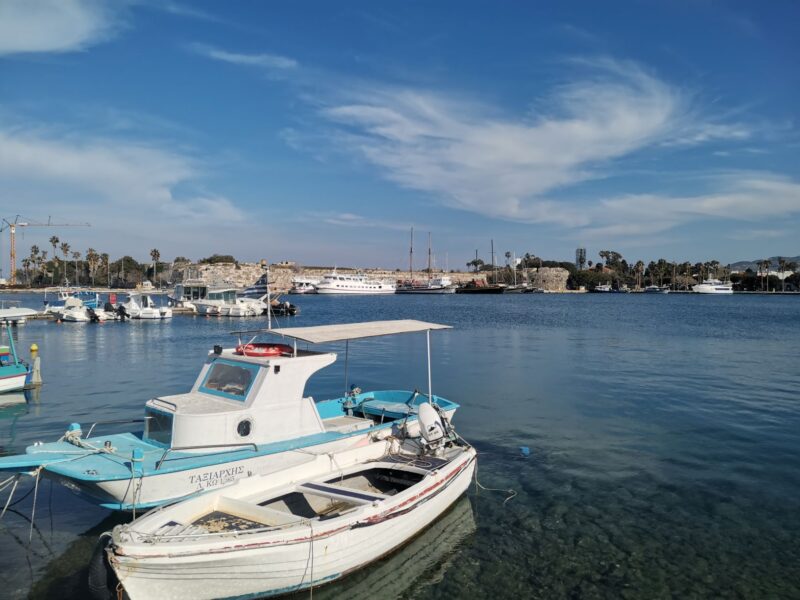
The Ionian Islands
Situated to the west of mainland Greece, the Ionian Islands are a group of islands in the Ionian sea. Comprised of a mix of small and large islands, the seven largest Ionian islands are Kerkyra (commonly referred to as Corfu), Ithaca, Kefalonia, Paxi, Lefkada, Zakynthos and Kythira. Corfu is the largest island of the group. Compared to the majority of the other Greek islands, the Ionian islands have a slightly cooler climate, are rich in greenery, and have more influences from Italy.

The Ionian island’s Italian influences stem from its past, where it was under Venetian rule for centuries. This protected them from being ruled by the Ottomans, unlike the rest of Greece. Corfu is the only island in Greece that has never been ruled by the Turks. All this has, understandably, resulted in the Ionian islands being unique in contrast to other Greek island groups.
Despite the Ionian island’s proximity to mainland Greece, they aren’t as conveniently connected as some of the other islands. Kythira is connected to Piraeus port in Athens, but most of the other islands are connected to the mainland via other ports. Corfu, Zakynthos and Kefalonia have international airports that are reasonably well connected to Europe during the summer months, so flying into one of these is preferable to begin and end your journey, and to have the best flexibility with ferry routes.
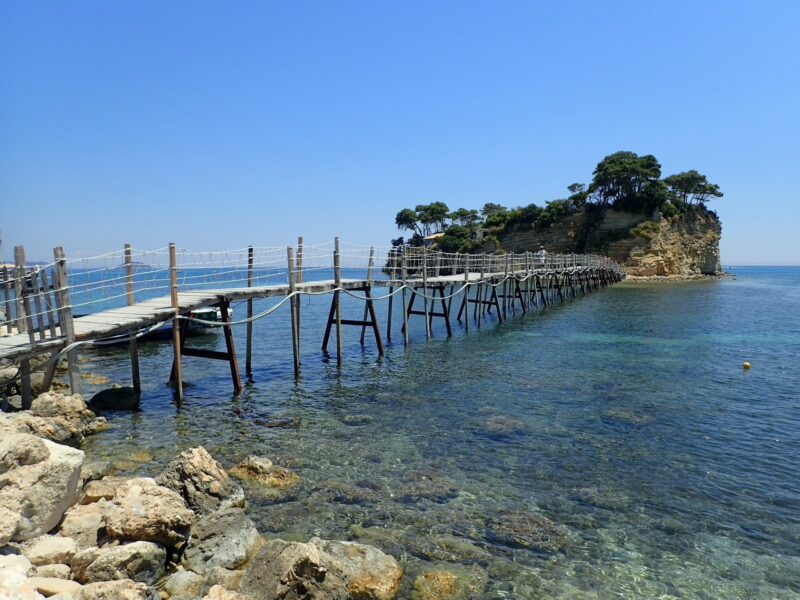
The Cyclades
One of the most well-known island groups of Greece, the Cyclades, is located to the southeast of mainland Greece in the Aegean sea. Many of the Cyclades are inhabited, with some of the most well-known islands being Santorini, Mykonos, Naxos, Paros and Antiparos, Milos, Tinos, Ios, Serifos and Syros. Cyclades means ‘encircle’, which is what the group of islands do around the small, uninhabited island of Delos, making this one of the most important islands in the group.

Most of the islands in this group are home to ancient ruins and features, but white-washed houses and small winding alleys are what these islands are most famous for. Throughout the Cyclades, these streets make for picture-postcard scenes of Greece and are what so many people associate with Greek islands. The islands are quite diverse, so it’s easy to experience the stunning views and exclusivity of Santorini or Mykonos one day, and be in the quaint old town or villages of Naxos the next.
The Cyclades are well connected to each other, as well as, to Crete, Rhodes and mainland Greece (including Athens). The availability of many ferry routes makes them one of the most interesting and straightforward island groups to visit. Santorini and Mykonos have international airports which cater to direct international flights in the summer months, but many of the islands are also connected to Athens via domestic flights. It is reasonably easy to visit multiple islands in the group, as well as, islands from other groups, without having to go via Athens, depending on where you are flying from.
Check out our Santorini and Naxos walking tours on our Youtube channel for a deeper insight into the Cyclades, as well as routes that you can walk when you’re there.
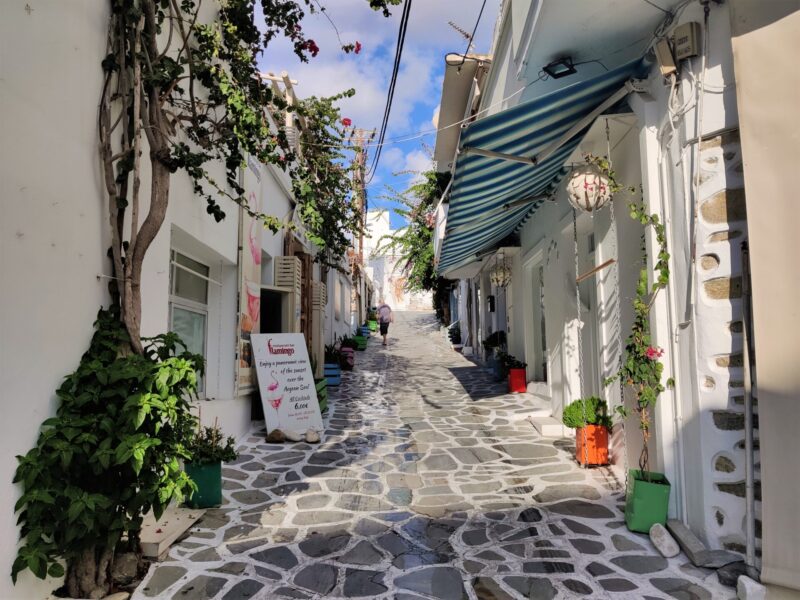
The Sporades
The Sporades Island group is located in the Aegean sea, off the east coast of mainland Greece. While there are 24 islands in the Sporades, only 4 are permanently inhabited. These are Alonnisos, Skiathos, Skopelos and Skyros. The two most visited islands are Skiathos and Skopelos, but all of the islands have their unique charms.
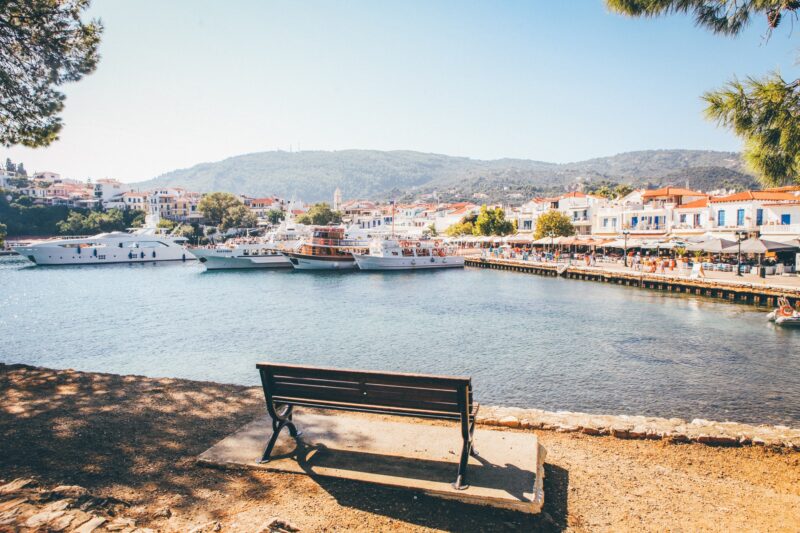
Sporades means scattered, which describes the geography of these islands perfectly. Skiathos has many beaches and is very beautiful, but is most well known for Skiathos town and its vibrant nightlife. Skopelos is wonderfully green and rich in natural beauty, making it a popular destination for couples and families.
The four major islands in the Sporades are connected via ferry to the mainland and Evia island, but they are not connected to any other island groups. However, Skiathos also has an international airport which has direct flights to European destinations in the summer months. While island hopping in Greece, it could be difficult to plan a trip to the Sporades, unless you are planning on only visiting these islands or the mainland. Alternatively, you could visit them from Evia, but combining them with other island groups will be difficult.

The Saronic Islands
One of the closest island groups to mainland Greece, the Saronic islands, makes for a convenient jumping-off point to the Greek islands, particularly if you are planning a trip to Athens or mainland Greece during your trip. The Saronic islands, located in the Aegean sea, consist mostly of small islands, unlike some of the other island groups. The main inhabited islands of the group are Salamis, Aegina, Spetses, Agistri and Poros. Salamis is the largest island of the group. Hydra and Dokos are small nearby islands which are often considered part of the Saronic Islands.

As with all Greek islands, each island of the Saronic group has its own distinct features and atmosphere. Hydra is a carless island and boasts great architecture, Poros has fantastic sailing, and Aegina is well suited to family holidays. The islands are a popular location for Greek holiday homes, due to their proximity to Athens and the mainland.
To visit these islands, you will need to start and end in Piraeus port (Athens), as direct flight connections from Europe to these islands are not available. There are also no ferry connections to other islands outside of the Saronic islands. However, these islands are well connected, so it’s easy to hop between them and visit them all in a short space of time.
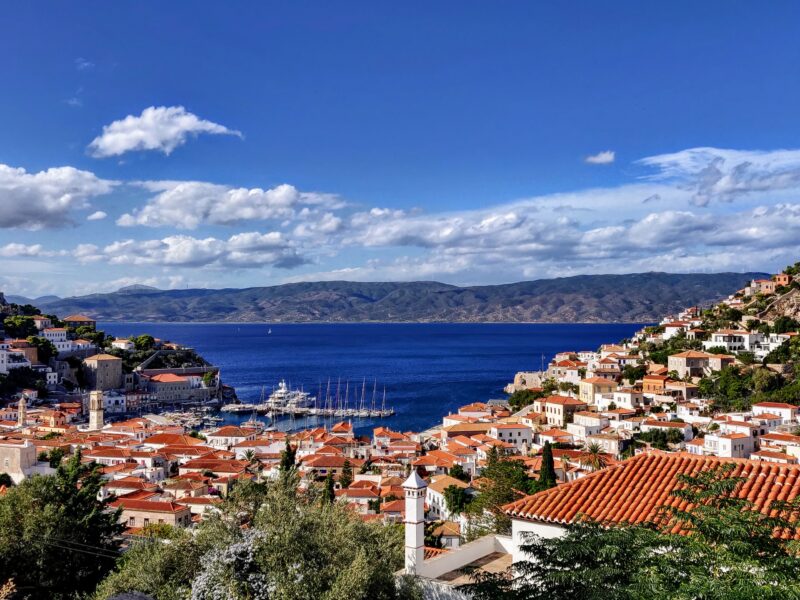
The North Aegean Islands
The Northern Aegean islands are some of the least visited islands by tourists, mainly due to their distance from other Greek islands. They are located in the Aegean sea, closer to the coast of Turkey than Greece. The main islands in this group are Lesvos, Samos, Ikaria, Chios, Limnos and Thassos.
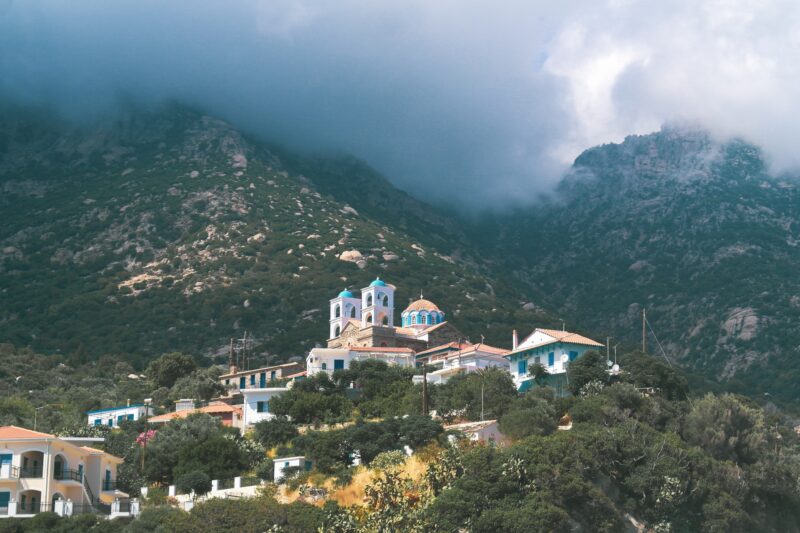
Similar to the other island groups, each island in the North Aegean islands varies quite considerably from each other, particularly in this group, because they are not grouped together in a chain or archipelago, they are only grouped for administrative purposes. Some of the most notable features of the islands include the outstanding food of Lesvos, which is well known for seafood and ouzo, the fine beaches of Limnos and Samos, and the isolated island of Ikaria, which is well known for the long life expectancy of its residents.
While the islands are better connected than some, it’s their distance apart from each other, and the mainland, that makes them difficult to visit in a short trip. From Piraeus port in Athens, you can ferry to a selection of the North Aegean islands, but this will take over 9 hours. Domestic flights from Athens to Samos or Lemnos take 1 hour, so this is advisable, to get the most out of your time. Ferries between the islands run regularly, but it is 7 hours from Chios to Lemnos, so bear this in mind. Samos is close to the Dodecanese and easily accessible from these islands so if you’re wanting to experience the North Aegean islands on a shorter trip, it may be best to island-hop to Samos from the Dodecanese.
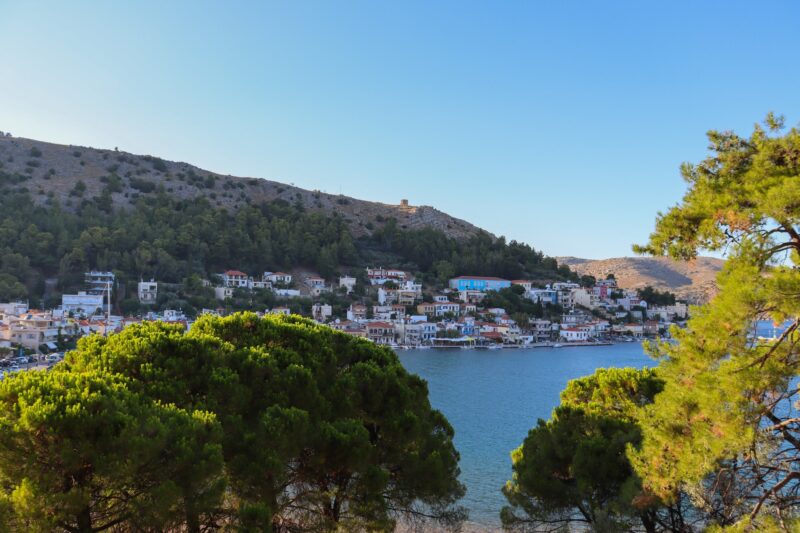
Crete
Crete is considered its own entity and is not part of an island group. The island is the largest and most populous Greek island, as well as being one of the southernmost islands in Greece. The capital city of Crete is Heraklion, with Chania being the second-largest city on the island. Crete’s size, historical offerings, excellent food and convenience to get to it, make it one of the best Greek islands to visit.
Crete has experienced an interesting past, having been ruled by the Romans, the Byzantine Empire, the Andalusian Arabs, the Venetian Republic and the Ottomans. It was also the centre of the first advanced civilisation in Europe, the Minoans. With such a colourful past, the island has many great historic attractions and features, as well as, a varied culinary scene. The island is widely considered to be one of the most beautiful Greek islands, with incredible beaches, stunning natural landscapes and magical old towns.
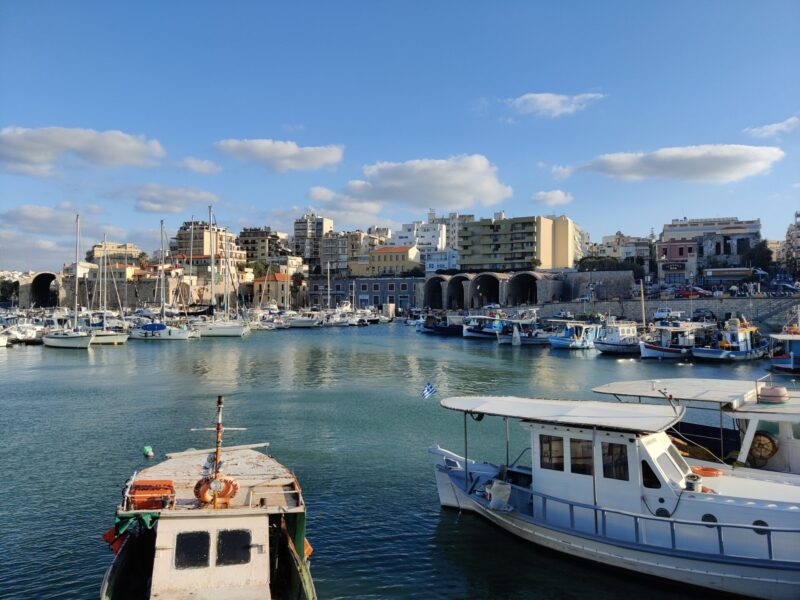
The island of Crete has five ferry ports, Heraklion, the most major, Chania, Rethymno, Sitia and Kissamos. Heraklion has ferry routes to many of the Cycladic islands, a selection of the Dodecanese islands (including Rhodes), and to Athens. Chania has ferry connections to Milos, where onwards connections to the Cyclades, and Athens, can be found. Rethymno has a few ferry routes to the Cycladic islands. Sitia has routes to the Dodecanese and some Cycladic, and Kissamos has routes to the most southern Ionian islands. Frustratingly, there aren’t any ferries that run between the ports of Crete, so to get between ports and cities, you need to drive, take a transfer or, take a bus.
Lastly, Heraklion and Chania are home to international airports, making Crete a great start or end point, if you’re wanting a direct flight from Europe. The island’s range of onward ferry routes makes it ideal for flying into. This will allow you to explore Crete and then jump off to the next set of islands. If you’re looking for more info on Crete, take a look at our Chania and Heraklion walking tours on our Youtube channel.
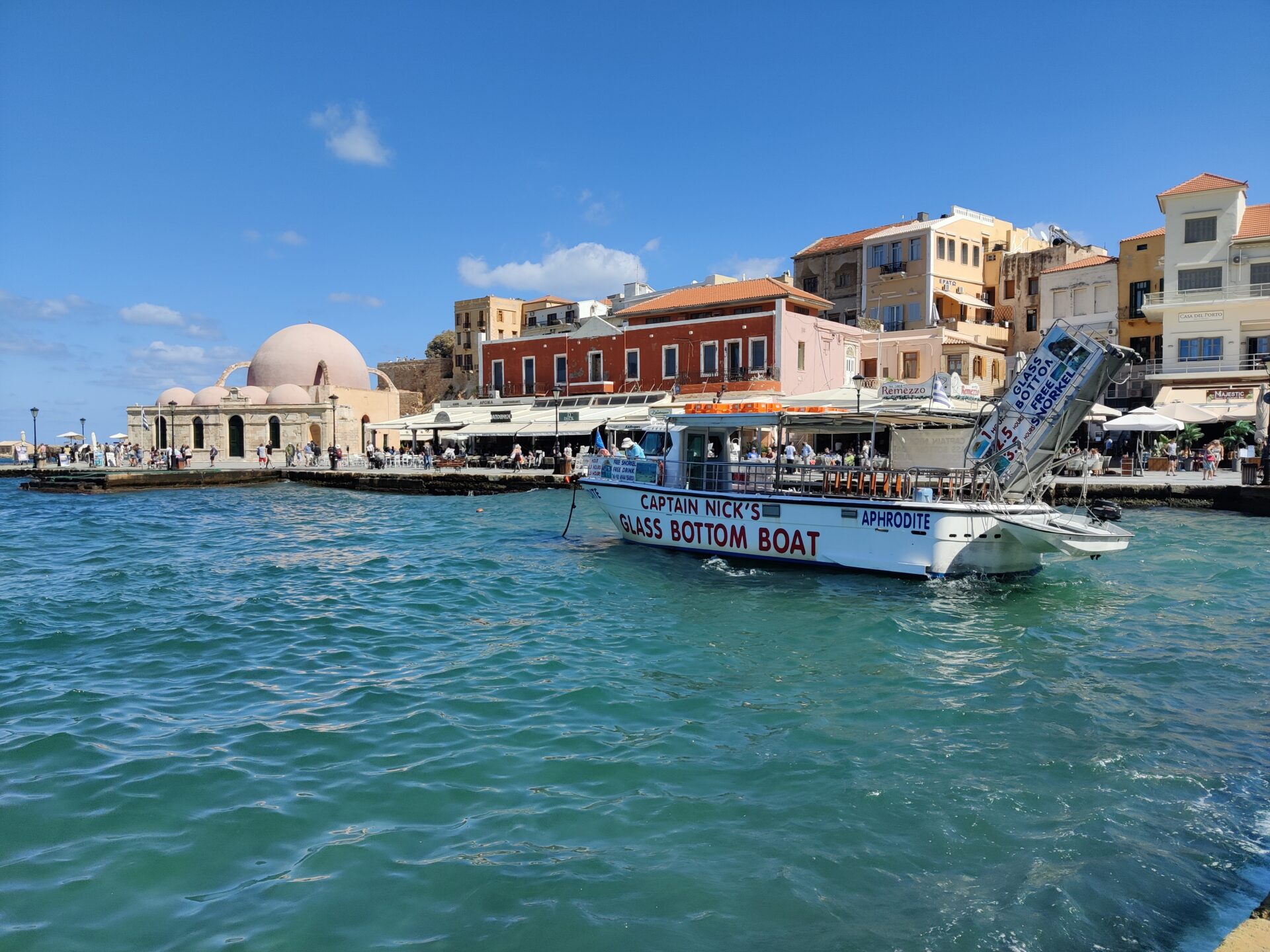
Evia
Although Evia is the second-largest island in Greece, it is one of the least visited islands for international tourists. The northern tip of the island is situated near the mainland port of Glyfa, and the southern tip is near Athens and the island of Andros. It is a long thin island and, by car, would take around 5 hours to cover from one end to the other.
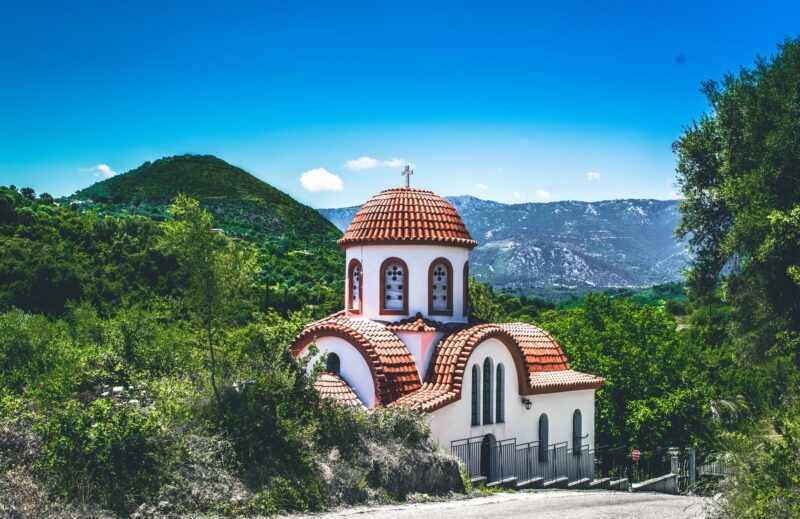
Like many of the Greek islands, Evia has a varied landscape consisting of fine beaches with crystal clear waters, small fishing villages and larger working cities. It is also blessed with lots of greenery including lush forests and mountains further inland. Its proximity to Athens and the mainland has made it a common holiday destination for Greeks, giving the island a very local and non-touristic vibe.
Despite Evia’s size and close connection to the mainland, it isn’t as easy to get to as one might think. By car, you can drive or taxi into Evia via one of two bridges in the main town of the island, Chalcis. By ferry, there are several ports on the island which have ferry connections to ports on the mainland, the closest to Athens being Rafina. For connections to other islands, the port of Karystos in the south connects to a few of the north Cycladic islands and the port of Mantoudi connects to the Sporades islands and Thessaloniki on the mainland. If you want to explore further with your Greek travel adventures, Evia is worth visiting, but its lack of connections with other islands, and Athens, make it less of a contender for most visitors with limited time.
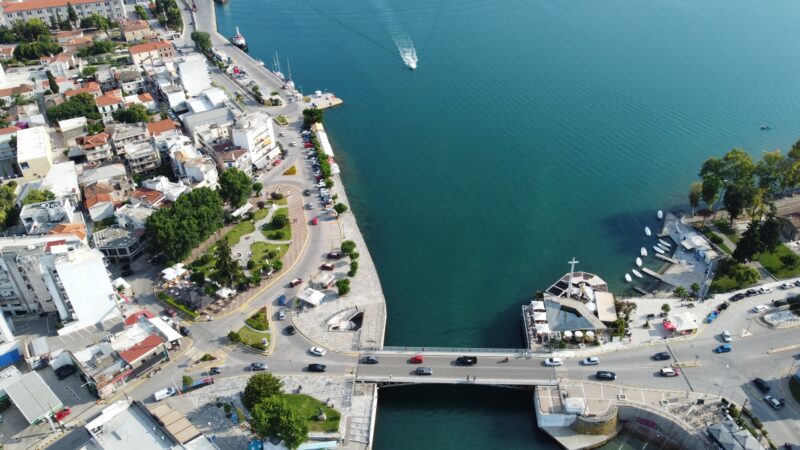
So that’s our summary of the six island groups in Greece along with Crete and Evia, the two largest islands. Let us know in the comments if you have been to any islands while on your Greek travels and what you thought of them. Check out our Greece travel guides for more information on how to get in, out and around some of the top destinations in the country, including what to do, where to stay and what to expect. Read our complete guide to island hopping in Greece if you’re planning a trip to Greece and want to know the best routes, when to visit and what options there are for getting between and around the islands.
Pin this article to save it for later or share it with others
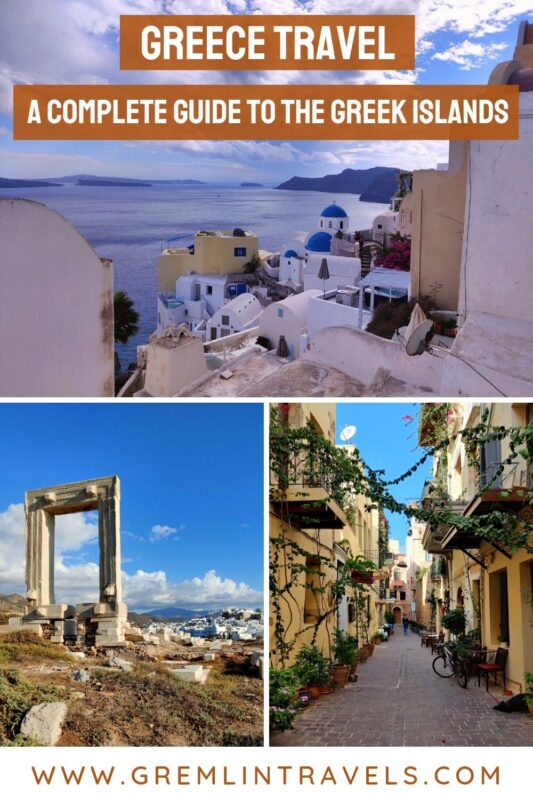

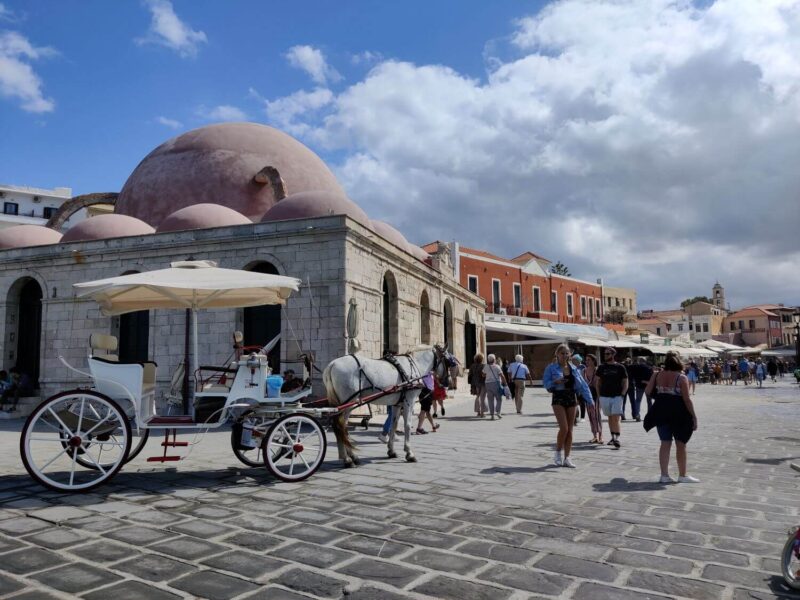
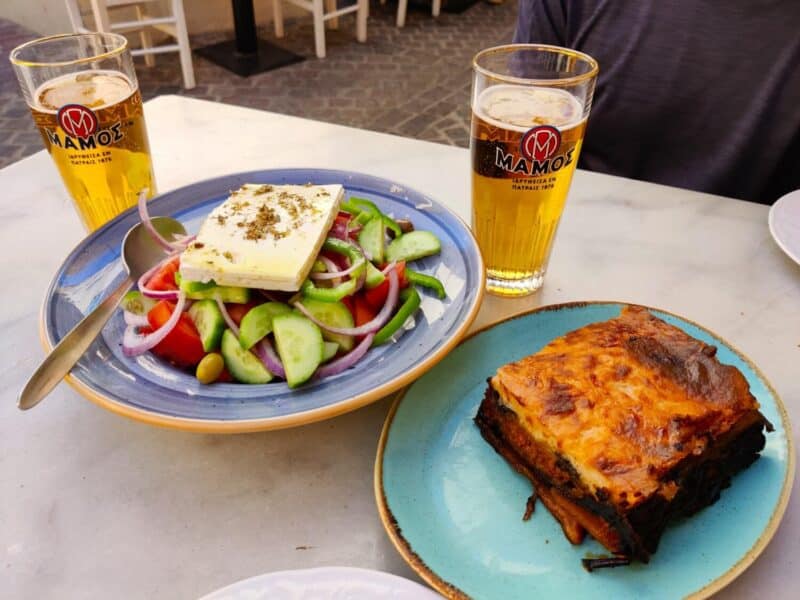

Amazing article !! Greece is all time classic. A piece of Heaven on earth.
Thanks for the comment. Yes, Crete is amazing and one of our favourite islands in Greece!